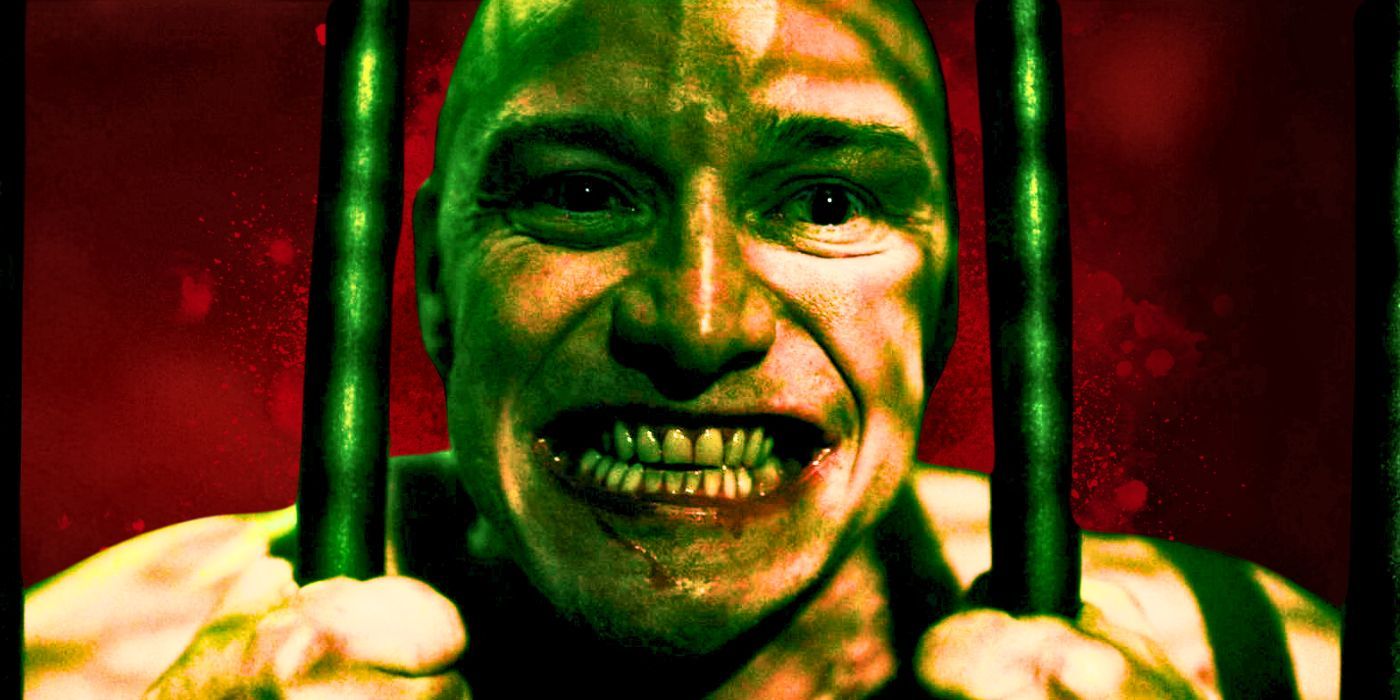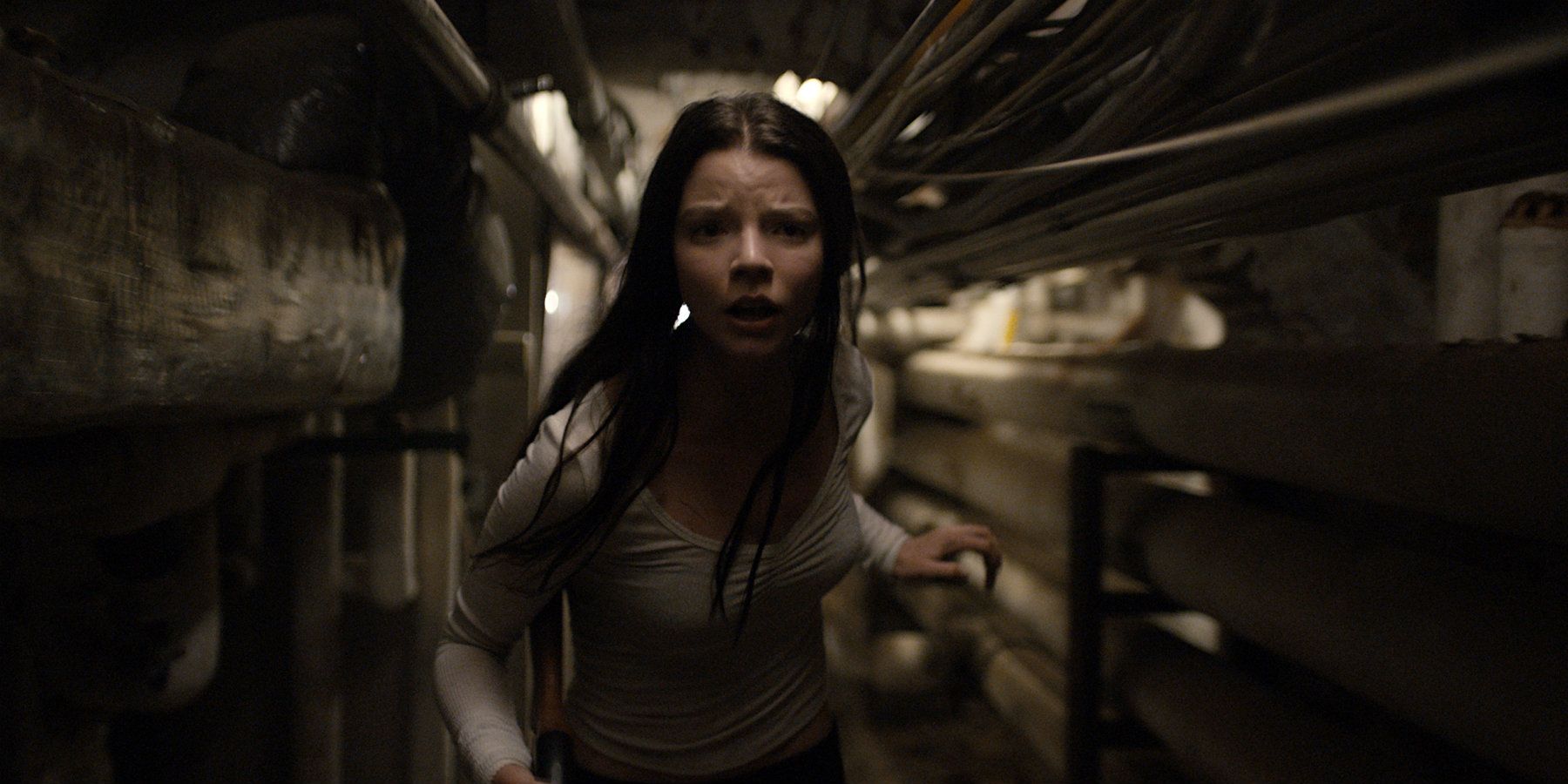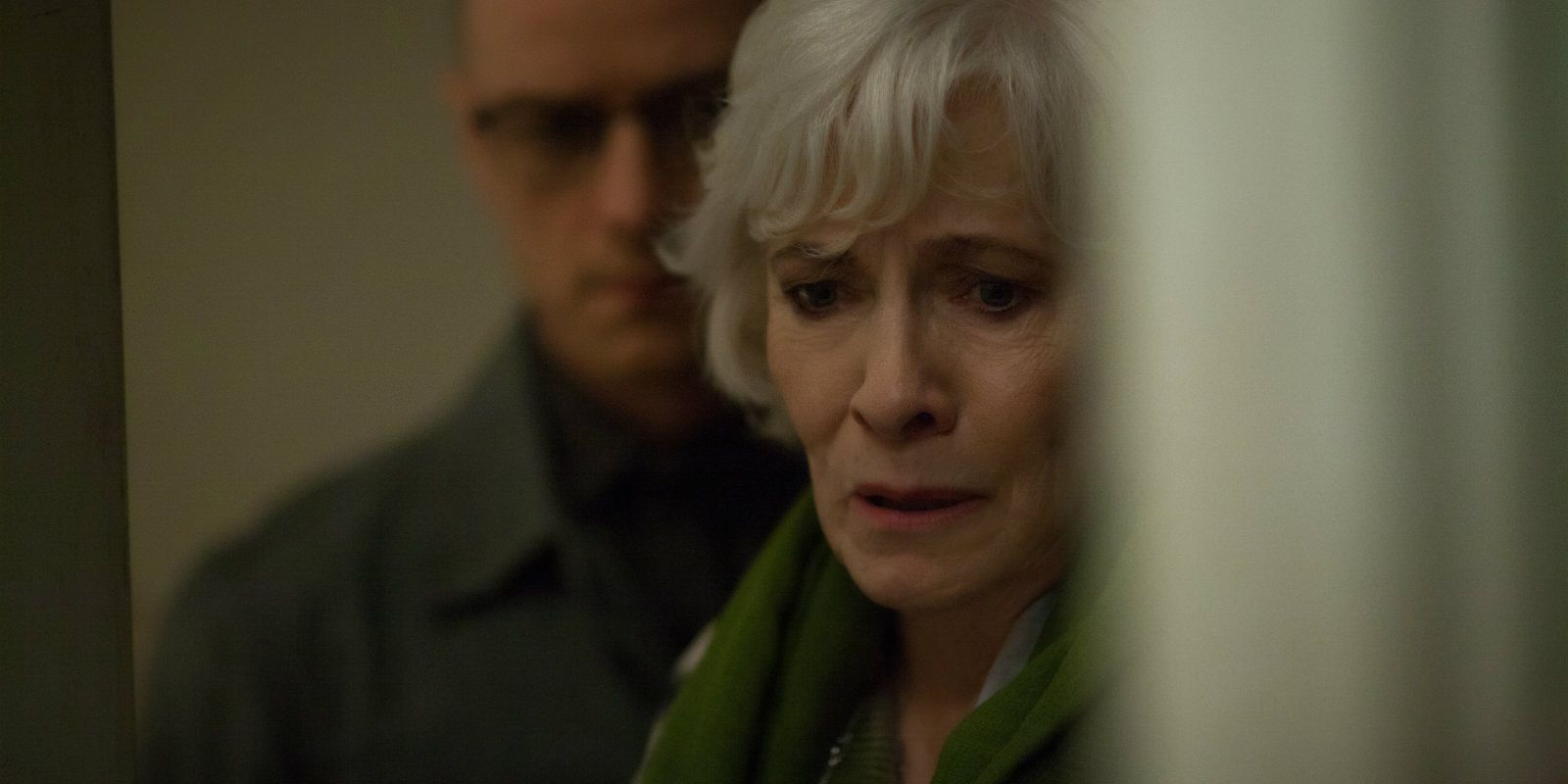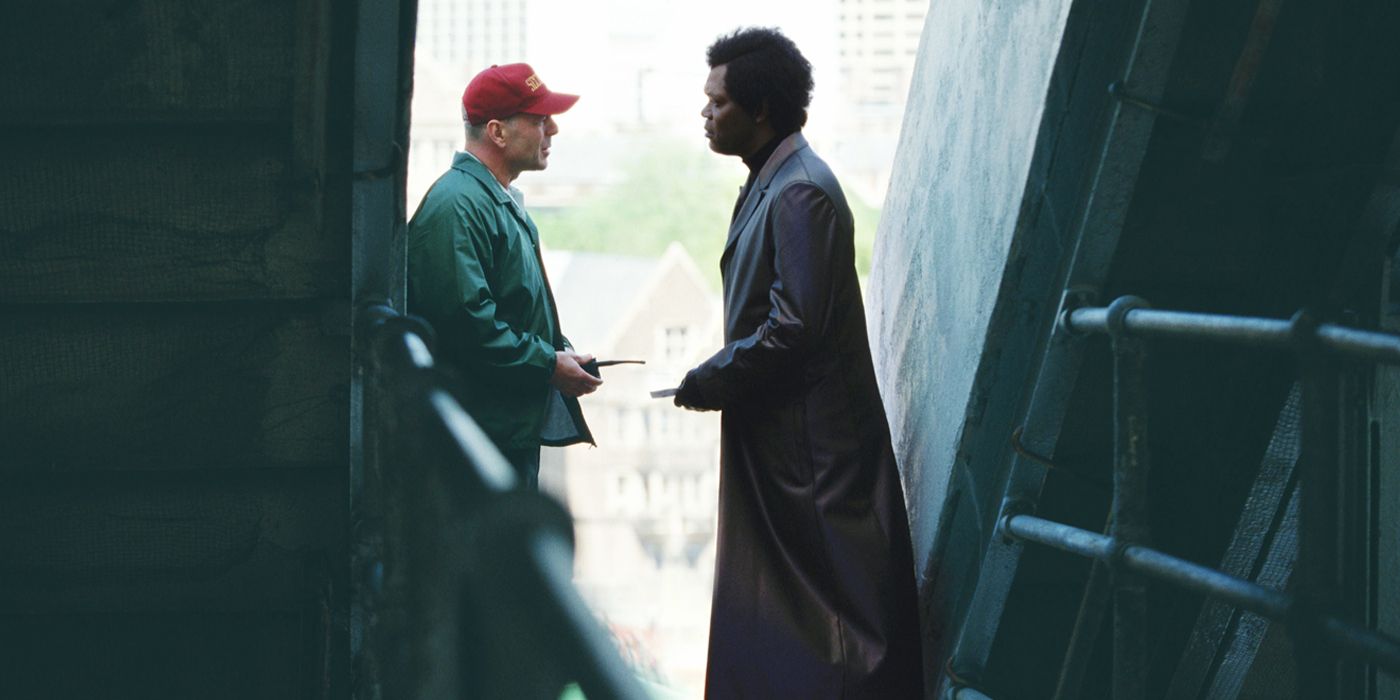Summary
- The Shyamalanaissance is real, with Split marking a major comeback for M. Night Shyamalan.
- Split dives into a complex look at Dissociative Identity Disorder through Kevin's 23 personalities.
- The surprising twist in Split ties it to Unbreakable, setting up the dark superhero trilogy with Glass.
MAJOR SPOILERS for Split and Glass ahead.
The Shyamalanaissance is real and the ending of Split more than proves it. M. Night Shyamalan famously entered a massive slump in the '00s, following up his success on films like The Sixth Sense and Unbreakable with a series of critical duds. Following the outright failure of After Earth, however, Shyamalan made some course corrections. The director's 2015 film The Visit saw him take a step back, making a low-budget movie high on ideas. Shyamalan followed that project up with the well-reviewed Split, his most layered movie in well over a decade.
Split, which is loosely inspired by a true story, follows three high school girls who are kidnapped after a birthday party and locked up by Kevin, a man (James McAvoy) with 23 distinct personalities hidden within him. Two of the darker personalities have taken over and hope to use the girls as part of a dark evolutionary plan, all focused on Anya Taylor-Joy's Casey. Shyamalan’s movies always have complicated endings that leave viewers with boundless questions and lots to discuss and Split is one of his most complex. There’s a drip-feed of information about the main plot, a frankly haunting background to one of the main characters and, without a hint of hyperbole, arguably the best M. Night Shyamalan movie plot twist since The Sixth Sense.
What Was Up With Kevin's Personalities In Split?
Kevin Suffers From A Fantastical Form Of Dissociative Identity Disorder
McAvoy’s "main" character is Kevin, a regular guy who, due to a series of traumatic childhood events, has created a string of alternative personalities, or alters, most of whom are mentally stronger than he was initially. In this world, dissociative identity disorder doesn't just lead to a psychological change, but also a physical one; Kevin can actually alter his body with each personality switch, meaning some personalities can have OCD and need glasses, while others need insulin shots. Who Kevin is at any given moment depends on who has stepped into "the light" in his mind, something typically controlled by the personality known as Barry.
In the movie, the core personalities shown are Dennis, Patricia, Hedwig, and Barry. The former two - who call themselves the Horde - are the darker sides of Kevin, who have previously been pushed down by Barry and the rest but break out by manipulating the childlike Hedwig, who can take control of the light at will. Others try and break through to make a cry for help, but the Horde repeatedly pushes them back. It’s important to note that while this is Kevin’s body, his personality doesn’t seem complicit in either side of this – when he finally does emerge, he begs to be killed, revealing that even though Barry and co. are the good guys, they’re still going against the original alter’s will.
The Horde’s plan is to unleash The Beast, a mythical (at least in Kevin’s psyche) 24th personality. It’s only alluded to in the film, but it appears to be based on the animals in the zoo above where Kevin lives. In the third act, the Beast breaks out thanks to Dennis and kills two of the kidnapped girls, but allows protagonist Casey to live due to her own troubled past, recognizing a bond between them. After this murder spree, Kevin appears to have reached a point where the Horde is in full control and can bring the indestructible Beast out at will, making him an almost Jekyll and Hyde superhero. And, yes, superhero really is the word, as shown in the sequel, Glass.
How Casey's Past Protected Her From The Beast In Split
Her Trauma Echoed In The Beast's Shared Memories
While the film is ostensibly concerned with Kevin’s past, the person whose backstory is elaborated on most explicitly is Casey's. She’s introduced as the weird kid who's always on her own and constantly getting into trouble, only invited to the birthday party from which the girls were kidnapped out of pity. Despite these social defects, she shows a proactiveness and understanding of the dire situation that allows her to succeed where the others fail.
The truth behind this, however, is rather haunting. In a series of flashbacks, audiences see her being taught to hunt by her father, at first assumed to be the cause of her skewed view of the world, but later revealed as context for the horrific abuse at the hands of her uncle. The film provides a chilling representation of pedophilia - the grooming scene, with the adult wanting to “play animals” is terrifying, as is the power the uncle wields even when held at gunpoint - and goes to great efforts to show how it affected Casey's life growing up.
The story resolves itself with Casey finally finding the power to talk about her experiences, a decision in stark contrast to Kevin. Rather than letting a troubled past manifest, she chooses to deal with the problem, which ties directly into the film’s core theme. It's a theme that continues on in the final movie in the trilogy, Glass.
Split's Themes Of Generational Abuse & Trauma Explained
How Casey And Kevin Deal With Their Pasts Affects Their Futures
On a thematic level, Split is predominantly about how people deal with abuse. Both the protagonist and antagonist are the product of turbulent childhoods that have led to them becoming outsiders. For Casey, this manifests in her desire to be alone, with silence essentially her coping mechanism - she causes trouble so she can be sent to detention and get away from everyone. Kevin's is a more extreme case, hinted to come from a darker past, where he's completely repressed the pain and birthed new personalities to cope with the trauma.
There's an interesting connection between those "damaged" people. Casey uses her vague grasp of Kevin's mental fracturing to try and help herself escape while the other hostages can't concentrate. Later, the Beast doesn't kill Casey because he sees on her self-harm scars that show him she's similar to him. It's a brutal but strangely poignant reflection on how people suffering from mental health issues can view themselves as alone, not seeing their connection to the wider world. This ties into the bigger solution to this insular thinking that the director presents; finding and accepting the compassion and understanding of others.
It's a brutal but strangely poignant reflection on how people suffering from mental health issues can view themselves as alone, not seeing their connection to the wider world.
Throughout the movie, Kevin is offered empathy from Dr. Fletcher despite the mocking from her neighbors and peers, but the Dennis personality keeps ignoring it, willingly leading him down the dark Beast path - literally finding comfort in only himself. In contrast, Casey learns to address her past, making an active move against it and starting herself on a better trajectory. It's a rather simple notion, but a well-meaning one. The film preaches acceptance and openness, both to oneself and to others.
Split Is Actually Unbreakable 2 (& Sets Up Glass)
For years, Shyamalan had teased a sequel to 2000’s Unbreakable, his dark superhero drama. It turned out he wasn’t lying – in a jaw-dropping rug pull, it’s revealed in Split's final scene the film is actually Unbreakable 2. The coda plays immediately after the end credits title card, showing a diner where a TV report about Kevin is playing and customers comment on its similarity to an event from 15 years ago involving a guy in a wheelchair. The camera then tracks over to reveal Bruce Willis, reprising his role of David Dunn (evidenced by his nametag), who dryly confirms the old villain’s identity as Mr. Glass and walks out. It's a plot twist that reveals the characters of Split and Unbreakable have been in the same world all along.
No matter Split's effectiveness as a thriller, it is an astounding twist. It’s completely unexpected and more audacious than any other movie before; Split is a surprise sequel and nobody had a clue until its release. Building to this shocker is likely why some parts of the film feel a bit scattered or off-base, but it does retroactively make the whole thing a lot more intriguing.
In fact, it pretty much reshapes the entire purpose of the film; Split isn't a hostage thriller, but a supervillain origin story. By the time he's able to control the Beast, Kevin has essentially become the sort of monster that a traditional comic book hero would take on, and, as Glass later proved, that was Shyamalan's real goal. As with Unbreakable, which revealed the twist that Samuel L. Jackson was the bad guy, Split explores the psychology of what would make someone become a maniacal villain.
As with Unbreakable, which revealed the twist that Samuel L. Jackson was the bad guy, Split explores the psychology of what would make someone become a maniacal villain.
What Happened After The Events Of Split
It All Finally Built To Shyamalan's Dark Superhero Trilogy
The ending of Split set up a broad scope for the threequel ending to Shyamalan's intense, low-budget superhero riff. Unbreakable told the origin story of Bruce Willis' David Dunn, a.k.a. The Overseer; Split told the origin story of James McAvoy's Kevin Wendell Crumb, a.k.a. The Beast; while Glass wrapped up the trilogy with the origin story of Samuel L. Jackson's diabolical villain Elijah Price, a.k.a. Mr. Glass. The third movie brings them all together in a knock-down, drag-out fight between a noble hero, the beast he pursues, and the manipulative supervillain pulling the strings from the shadows.
The third movie brings them all together in a knock-down, drag-out fight between a noble hero, the beast he pursues, and the manipulative supervillain pulling the strings from the shadows.
After the events of Split, which occur three weeks before those of Glass, it's revealed that David has been hunting Kevin since the news of his kidnapping and killing the girls got out. When the police arrive, Dunn agrees to turn himself in quietly and soon finds himself locked up in a psychiatric ward with Kevin and Elijah. The three break out and clash again after Price convinces Kevin to help him, and another returning Split character is revealed: during their fight, Split's Casey also shows up, seemingly no worse for wear, and tries to get through to Kevin. Though he's in Beast mode, she's hoping that the brief connection she shared with Kevin will be enough to once again tame the Beast.
Of course, it's M. Night Shyamalan, so there isn't just one twist in the third act, but two. It's revealed Mr. Glass created both the superhero The Overseer and the supervillain The Beast with the Eastrail 177 train crash. Not only did David Dunn survive the crash, but Kevin's father was killed in the same crash, leaving Kevin to grow up with an abusive mother. Then it's revealed that the psych ward psychiatrist, Dr. Staple, is actually an agent of a secret society that monitors and eliminates threats from superpowered people. By the ending of Glass, all three - David, Kevin, and Elijah - are dead. Considering the terror of the Beast unleashed at the ending of Split, however, that may have been the most merciful ending for both Kevin and the world.
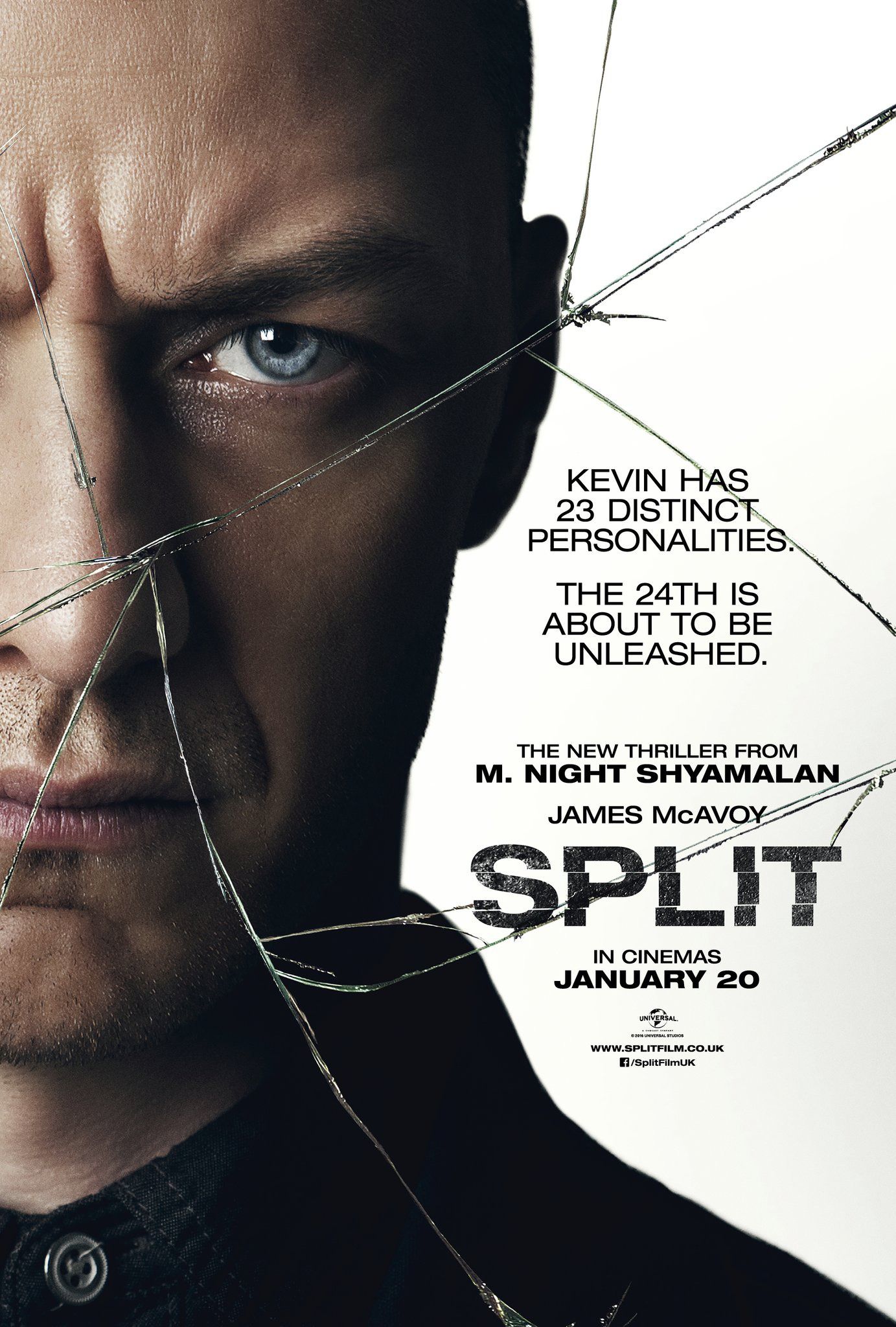
Split
M. Night Shyamalan's Split follows Kevin Wendell Crumb (James McAvoy), a man with dissociative identity disorder, who kidnaps three teenage girls and imprisons them in an underground facility. When Casey (Anya Taylor-Joy) realizes that she can play Crumb's personalities against one another, she begins to form a plan for escape before she is sacrificed to a creature he refers to as "the Beast".
- Director
- M. Night Shyamalan
- Release Date
- September 26, 2016
- Cast
- Kim Director , Betty Buckley , Haley Lu Richardson , Brad William Henke , Anya Taylor-Joy , James McAvoy , Jessica Sula
- Runtime
- 1h 57m

